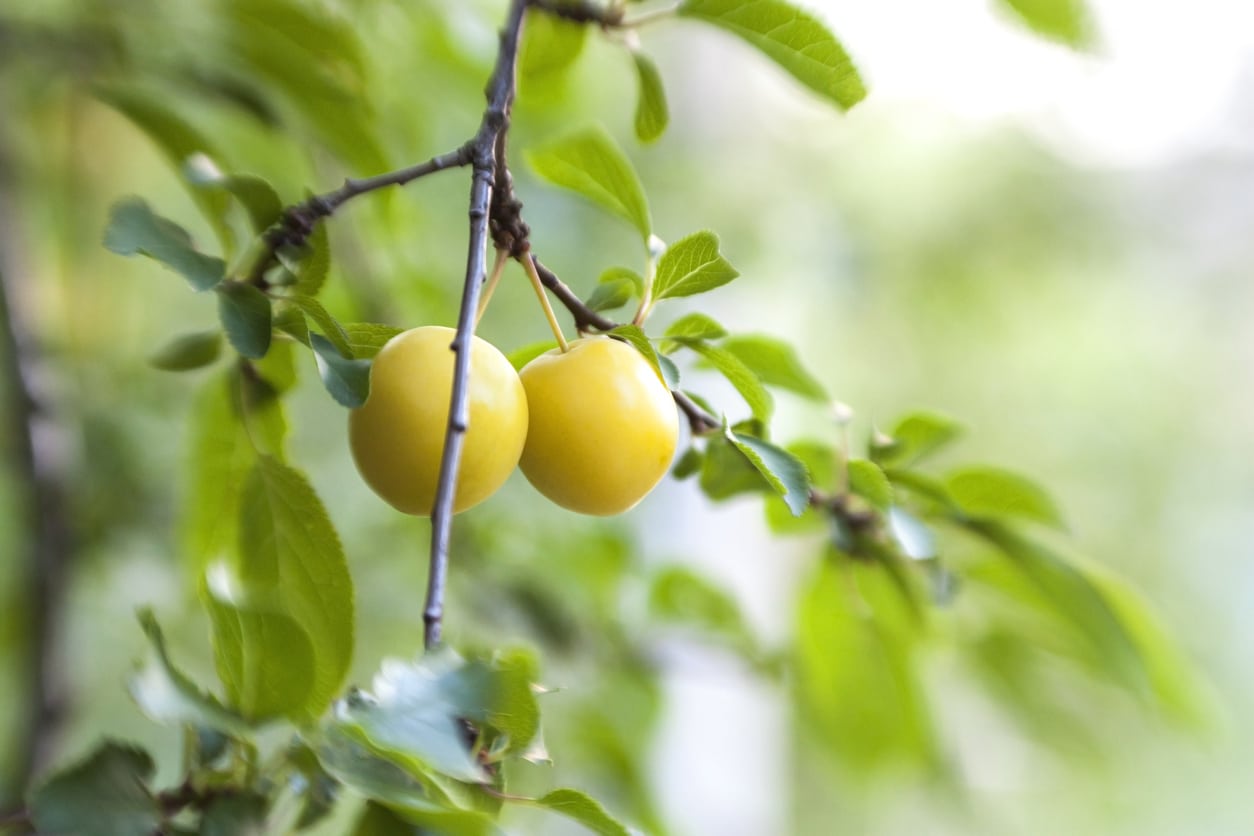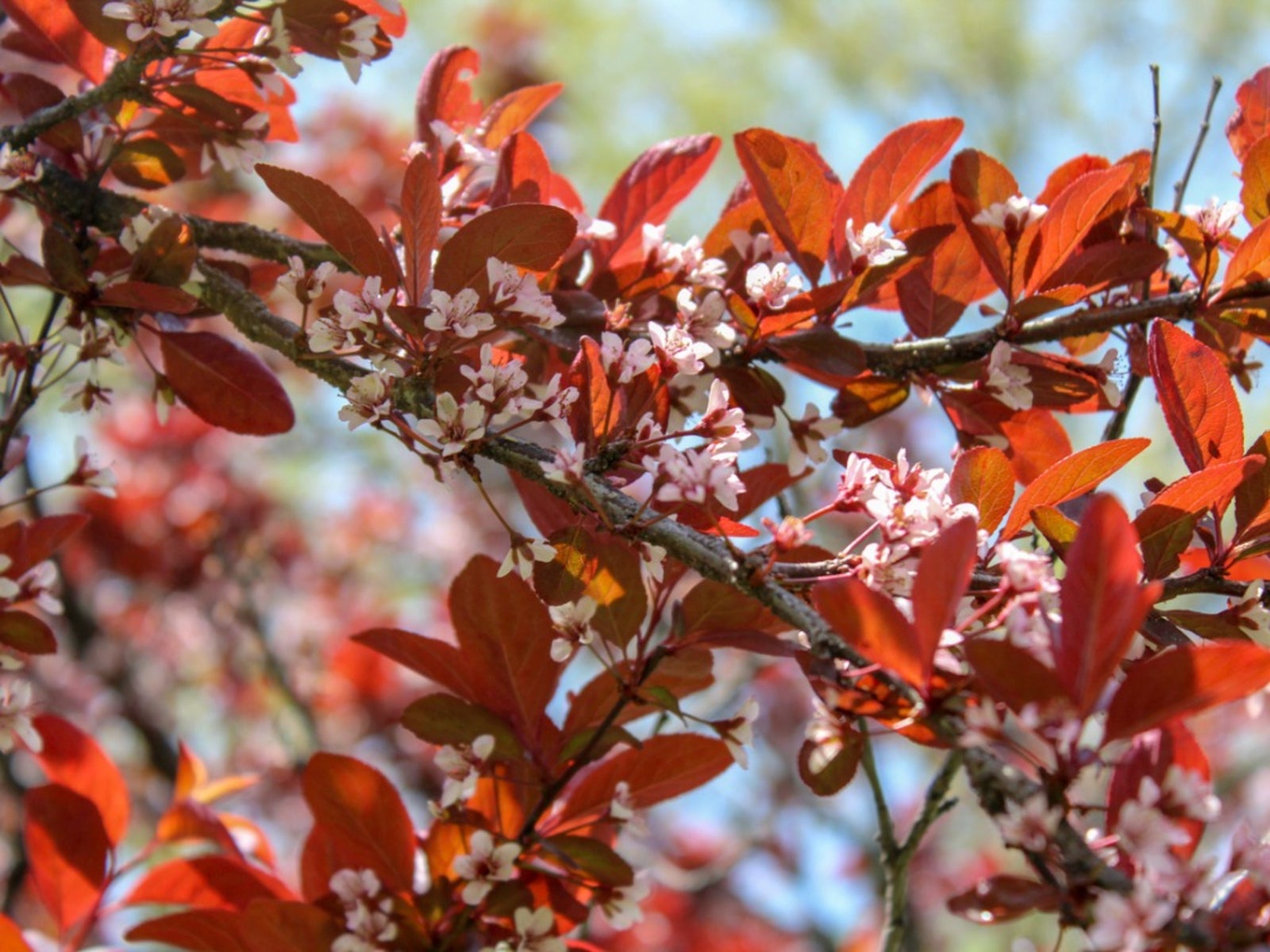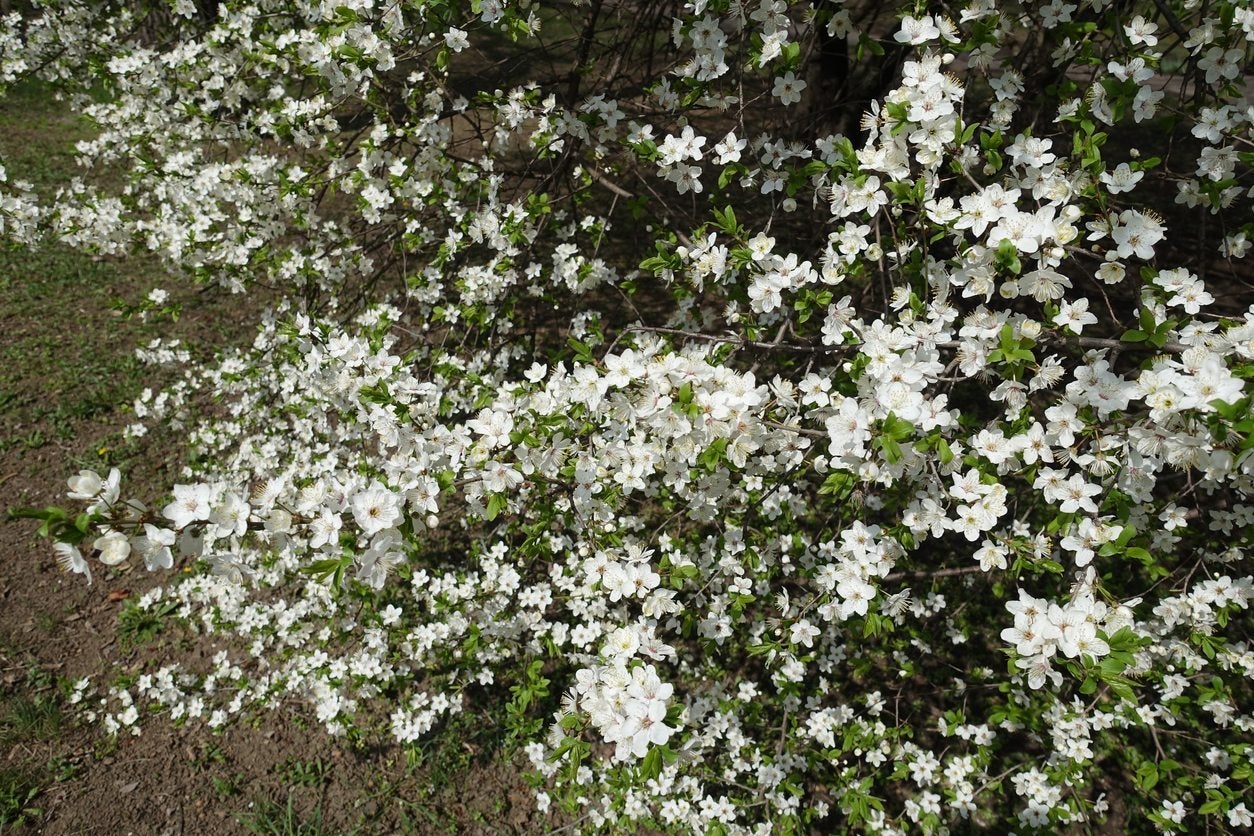Gypsy Cherry Plum Info – Caring For Gypsy Cherry Plum Trees
Gypsy cherry plum trees produce large, dark red fruit that looks much like a large Bing cherry. Originating in the Ukraine, cherry plum ‘Gypsy’ is a cultivar favored throughout Europe and is hardy to H6. The following Gypsy cherry plum info discusses the growing and caring of a Gypsy cherry plum tree.
Gypsy Cherry Plum Info
Gypsy plums are dark carmine red cherry plums that are good for both eating fresh and for cooking. The deep red exterior covers the firm, juicy, sweet orange flesh. The deciduous cherry plum tree has a rounded to spreading habit with ovate, dark green foliage. In the spring, the tree blooms with white blossoms followed by the large red fruit that is ready for harvest by the late summer to early fall. Gypsy cherry plum trees are partially self-fertile and should be planted with a compatible pollinator for best fruit set and yield. Cherry plum ‘Gypsy’ is grafted on St. Julian ‘A’ rootstock and will eventually attain a height of 12 to 15 feet (3.5-4.5 m.). ‘Gypsy’ may also be called Myrobalan ‘Gypsy,’ Prunus insititia ‘Gypsy,’ or Ukranian Mirabelle ‘Gypsy.’
Growing a Gypsy Cherry Plum
Select a site for Gypsy cherry plum that has full sun, with at least six hours per day that is southerly or westerly facing. Gypsy cherry plum trees can be planted in loam, sand, clay, or chalky soil that is moist but well-draining with moderate fertility.
Gardening tips, videos, info and more delivered right to your inbox!
Sign up for the Gardening Know How newsletter today and receive a free copy of our e-book "How to Grow Delicious Tomatoes".

Amy Grant has been gardening for 30 years and writing for 15. A professional chef and caterer, Amy's area of expertise is culinary gardening.
-
 My Homemade Orchid Fertilizer Always Brings More Blooms – Here's The Easy Recipe That Transforms Plants
My Homemade Orchid Fertilizer Always Brings More Blooms – Here's The Easy Recipe That Transforms PlantsScientist-turned-gardener Mary Ellen Ellis shares her tried-and-tested DIY orchid fertilizer recipe, plus more ingredients to try for healthy, happy plants.
By Mary Ellen Ellis
-
 Looking For Plants To Give You The Soft And Fuzzies? Try These 5 Fuzzy Leaf Plant Options
Looking For Plants To Give You The Soft And Fuzzies? Try These 5 Fuzzy Leaf Plant OptionsLovers of texture, drama, silver foliage and tactile plants will adore these special sensory garden additions. These fuzzy leaf plant options will leave you all aglow
By Susan Albert
-
Cherry Plum ‘Ruby’ Info: Learn About Ruby Cherry Plum Care
Ruby cherry plum fruit is sweeter than most cherry plums, but still has slightly tangy flavor. Try growing Ruby cherry plums for use in canning, baking and other culinary pursuits. The following article will help get you started.
By Bonnie L. Grant
-
 Golden Sphere Cherry Plum Trees – How To Grow Golden Sphere Cherry Plums
Golden Sphere Cherry Plum Trees – How To Grow Golden Sphere Cherry PlumsIf you love plums and want to add a little variety to the landscape, try growing a Golden Sphere plum. Golden Sphere cherry plum trees bear large golden fruit about the size of an apricot that can be eaten fresh out of hand, juiced or preserved. Learn more here.
By Amy Grant
-
 Newport Plum Info: Learn How To Grow A Newport Plum Tree
Newport Plum Info: Learn How To Grow A Newport Plum TreeNot everyone has room for a large tree. As a landscape designer and garden center worker, I often suggest smaller ornamentals for these situations. Newport plum is one. Click this article for Newport plum info and helpful tips on how to grow a Newport plum.
By Darcy Larum
-
 Myrobalan Plum Pruning Info: How To Prune Myrobalan Cherry Plums
Myrobalan Plum Pruning Info: How To Prune Myrobalan Cherry PlumsShould I cut back Myrobalan plum? While frequent or excessively trimming a cherry plum is not recommended, it may be necessary at times. Click on the article the follows to learn when and how to prune Myrobalan cherry plums.
By Darcy Larum
-
 Cherry Plum Information – What Is A Cherry Plum Tree
Cherry Plum Information – What Is A Cherry Plum Tree?Cherry plum? a group of Asian plum trees that are commonly called cherry plum trees. It could also refer to the hybrid fruits which are literally a cross between plums and cherries. This article will explain the differences of trees commonly called cherry plums.
By Darcy Larum